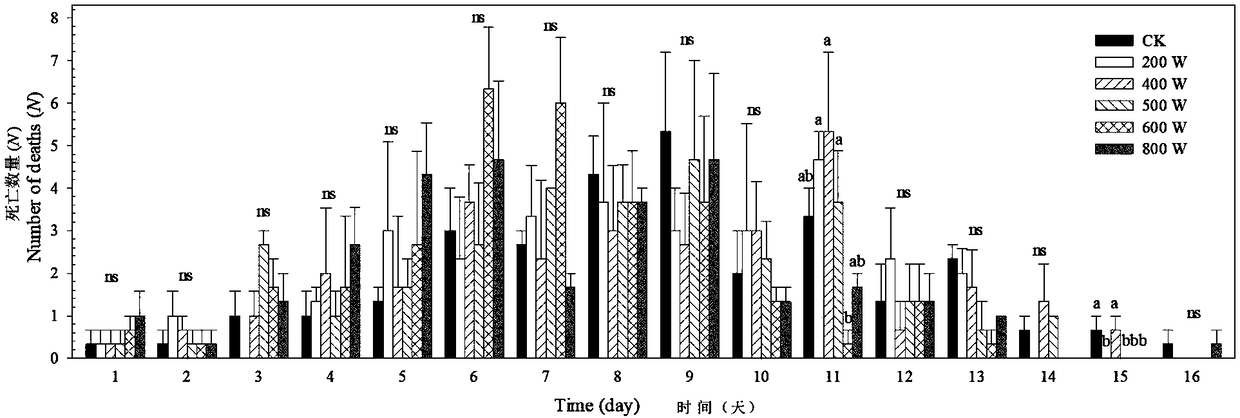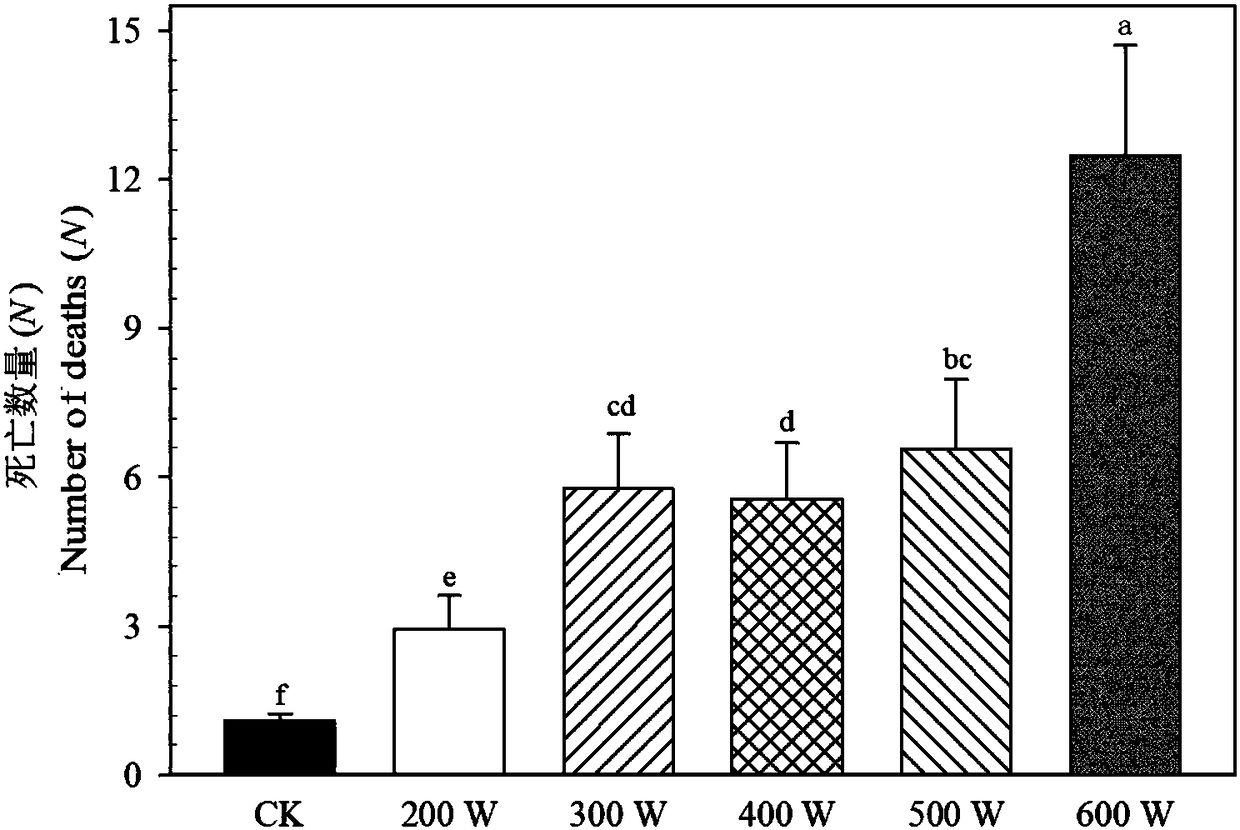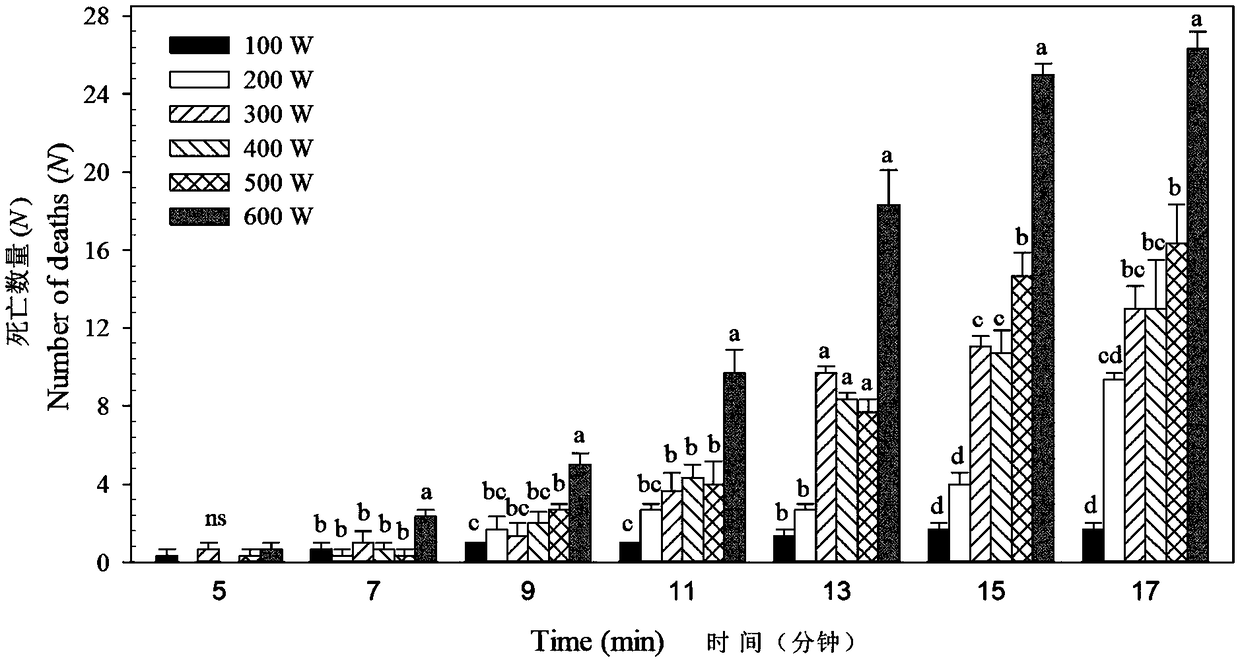Method for killing empoasca vitis in tea garden through microwaves
A technology of tea leafhoppers and tea gardens, which is applied to the device, application, and animal husbandry of catching or killing insects. It can solve the problems of high environmental requirements, limited ecological niche overlap, and difficult-to-control pests. The effect of high rate or killing rate and convenient operation
- Summary
- Abstract
- Description
- Claims
- Application Information
AI Technical Summary
Problems solved by technology
Method used
Image
Examples
Embodiment Construction
[0028] The present invention will be further described below in conjunction with the accompanying drawings.
[0029] see figure 1 Shown, a kind of method of the present invention kills or injures the small green leafhopper of tea garden tea by microwave, described method comprises the steps:
[0030] Step S1, setting a support frame (not shown) on the field ridge 2 of the tea garden, erecting two guide rails 3 on the support frame, and setting two small railcars 4 on the two guide rails 3 respectively;
[0031]Step S2, a support frame 5 is set between the bottoms of the four small railcars 4, connecting pieces 51 are arranged downwards around the bottom of the supporting frame 5, and an arc-shaped cover body 6 is erected at the bottom of the four connecting pieces 51, so that The cross-section of the arc-shaped cover body 6 is an inverted "U" shape;
[0032] Step S3, setting a plurality of microwave generators 1 on the inner wall of the arc-shaped cover 6; setting a solar pa...
PUM
 Login to View More
Login to View More Abstract
Description
Claims
Application Information
 Login to View More
Login to View More - R&D
- Intellectual Property
- Life Sciences
- Materials
- Tech Scout
- Unparalleled Data Quality
- Higher Quality Content
- 60% Fewer Hallucinations
Browse by: Latest US Patents, China's latest patents, Technical Efficacy Thesaurus, Application Domain, Technology Topic, Popular Technical Reports.
© 2025 PatSnap. All rights reserved.Legal|Privacy policy|Modern Slavery Act Transparency Statement|Sitemap|About US| Contact US: help@patsnap.com



